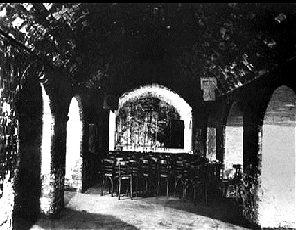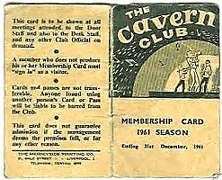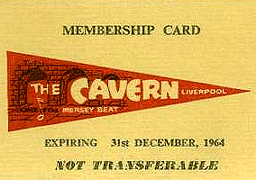
 |
 Inside the 'best of cellars' |
In
Liverpool, one such club would soon be known the world over as the birthplace
of the greatest musical revolution in history - The Cavern. The club can
nowadays be found in a former basement cellar at number 10 Mathew Street,
Liverpool 2, which is situated just off Liverpoolís city centre, but during
the 1950ís no shopper would ever have wandered down this narrow byway. It
was then little more than two rows of seven-storey warehouses where, throughout
the day, lorry loads of fruit and vegetables were off-loaded. During the war the basement at 10 Mathew Street had been used as an air raid shelter and was later utilised to store wines and spirits. In 1956 the main building was in use as a storage area for electrical goods, but the downstairs cellar was vacant. . . . |
 A rare picture of Mathew Street taken during the 1930s |
  |
The walls were painted black and there were no curtains or decorations. The first tunnel area was used to collect money and was also utilised as a cloakroom, with a room at the end which adjoined the stage that served as the bands' dressing room. The middle tunnel was the largest and contained the stage itself and rows of wooden chairs. All the lighting was concentrated onto the stage and, again, consisted of white bulbs. The third tunnel area was used for dancing. Inside the club temperatures were high and during 1957 the local council sent public health inspectors into the club to obtain air samples. Outside it was a modest 52 degrees Fahrenheit, but inside the club it was 82 degrees - a marked difference considering that the club had no heating! Itís also amazing that the club was such a success as The Cavern did not have a licence to sell any alcohol. Only soft drinks were sold inside the club, but many teenagers would smuggle in alcohol in small hip flasks. The place to go for a drink was just across the narrow street at 'The Grapes' pub, where the bands that had just finished their stint at The Cavern would often join other performers and their fans in a cooling drink or two. |
|
|